A self-defense siren is a compact, portable device designed to enhance personal safety by emitting a loud alarm, usually over 120 decibels, to deter attackers and attract attention. It typically activates through a simple pull-pin or button press, ensuring ease of use in emergencies. The siren uses advanced sound wave technology to produce a high-decibel alarm, operating at frequencies that cause hearing discomfort, providing essential moments for escape or intervention. Powered by either disposable or rechargeable batteries, it’s designed for reliability and continuous operation. Additional features like built-in flashlights and GPS tracking often enhance its effectiveness. Explore further to understand its full range of benefits.
Key Takeaways
- A self-defense siren emits loud alarms, often over 120 decibels, to deter attackers and attract help.
- It is activated through simple mechanisms like pull-pins or button presses for quick response.
- The device uses components like speakers and frequency modulators to produce high-decibel sounds.
- To ensure consistent operation, power sources include disposable, rechargeable, or solar-powered batteries.
What Is a Self Defence Siren?
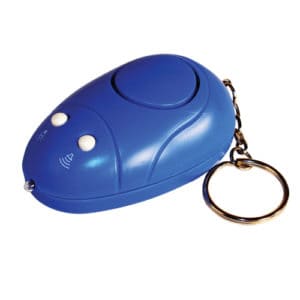 A self-defense siren is a compact, portable device that emits a loud alarm to deter potential attackers and attract attention. When considering personal safety, a self-defense siren becomes an essential tool. It’s small enough to fit in your pocket or attach to your keychain, making it convenient to carry wherever you go.
A self-defense siren is a compact, portable device that emits a loud alarm to deter potential attackers and attract attention. When considering personal safety, a self-defense siren becomes an essential tool. It’s small enough to fit in your pocket or attach to your keychain, making it convenient to carry wherever you go.
This device produces a piercing sound, often exceeding 120 decibels, loud enough to disorient an attacker and alert those nearby. The effectiveness of a self-defense siren lies in its ability to create an immediate sense of urgency, making it difficult for an attacker to maintain focus.
Activating the siren can give you vital moments to escape or attract help in any threatening situation. It’s a simple yet powerful addition to your self-defense strategy, especially in environments where you might feel vulnerable.
Key Components
To understand how a self-defence siren functions, you must know its key components: the activation mechanism design, sound emission technology, and power source options.
The activation mechanism determines how you trigger the alarm quickly and efficiently.
Sound emission technology focuses on how the siren produces a loud, attention-grabbing sound,
while power source options guarantee the device remains operational when needed.
Activation Mechanism Design
 The activation mechanism‘s key components include a pull-pin or button, sensor, and power source, all of which work together to guarantee the siren’s effective operation in emergencies. One example is the lipstick alarm.
The activation mechanism‘s key components include a pull-pin or button, sensor, and power source, all of which work together to guarantee the siren’s effective operation in emergencies. One example is the lipstick alarm.
The user interface design is essential, ensuring the siren is intuitive and easy to use under stress. A well-designed user interface enhances the user experience by making the activation process straightforward and reliable.
A pull-pin is often the primary mechanism for activating the siren. This pin is usually attached to a lanyard, allowing quick and effortless removal. Alternatively, some models feature a button that can be pressed to trigger the alarm. The sensor component detects the action and sends a signal to the power source.
The power source, typically a battery, guarantees the siren has the energy to emit a loud noise. This setup’s reliability is paramount, as it determines whether the siren will function when needed.
The design of these components aims to maximize efficiency and minimize the risk of malfunction, ensuring that the siren activates promptly during critical situations. This cohesive system offers peace of mind and immediate response when activated.
Sound Emission Technology
Understanding how the siren emits sound is just as important as knowing how to activate it. This device relies on advanced sound wave manipulation to generate a high-decibel alarm. When activated, it produces sound waves that travel rapidly through the air, creating an immediate and loud acoustic deterrence. This noise can reach uncomfortable or painful levels in the human ear, effectively deterring potential threats.
Key components of the sound emission technology include the speaker, the frequency modulator, and the amplification unit. The speaker converts electrical signals into sound waves while the frequency modulator adjusts the pitch and tone to optimize the deterrent effect. The amplification unit guarantees the sound is loud enough to capture attention even in noisy environments.
Here’s a closer look at what makes these sirens effective:
| Component | Function | Emotional Impact |
|---|---|---|
| Speaker | Converts signal | Urgency and Alertness |
| Frequency Modulator | Adjusts pitch and tone | Anxiety and Discomfort |
| Amplification Unit | Increases volume | Alarm and Attention |
| Outer Casing | Protects internals | Security and Reliability |
Power Source Options
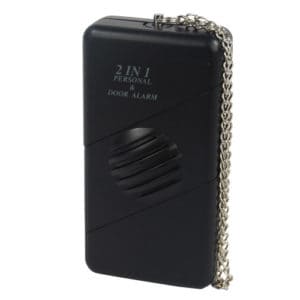 When exploring power source options for self-defense sirens, you’ll find they can be battery-operated or rechargeable.
When exploring power source options for self-defense sirens, you’ll find they can be battery-operated or rechargeable.
Battery-operated sirens typically use standard alkaline batteries, which are easy to replace and can be found anywhere. However, you must monitor battery levels regularly to guarantee your device is always ready.
Rechargeable options offer a more sustainable and cost-effective solution. These sirens have built-in batteries that can be recharged via USB ports or dedicated charging stations. Some models even incorporate solar power, allowing you to recharge them using sunlight. This can be particularly useful if you’re outdoors frequently or when electrical outlets aren’t readily available.
Solar power and other rechargeable options save you money in the long run and reduce waste, making them environmentally friendly.
When choosing between these power sources, consider your lifestyle and how often you must use the siren. Rechargeable and solar-powered options might be more suitable if you prefer low-maintenance devices. On the other hand, if you need a quick and simple solution, battery-operated sirens can provide reliable performance with minimal fuss.
Activation Mechanism
Most self defense sirens activate with a simple pull of a pin or press of a button. These activation triggers are designed for ease of use, guaranteeing you can quickly respond in an emergency. The user interface is typically straightforward, minimizing the need for complex maneuvers during stressful situations. Here’s a look at common activation mechanisms:
| Activation Method | Description |
|---|---|
| Pin Pull | Removing a pin from the device |
| Button Press | Pressing a designated button |
| Keychain Pull | Tugging the device from a keychain |
| Wrist Strap Pull | Pulling a strap attached to your wrist |
Each method has advantages, depending on your preference and the context in which you might need to use the siren. For instance, a pin pull might be more effective if you carry the siren in a pocket, while a wrist strap pull could be quicker if you wear the siren as part of your daily gear.
In designing these activation triggers, manufacturers focus on reliability and simplicity. The goal is to guarantee that you can activate the siren without fumbling, even in high-stress situations. This user-centric approach underpins the effectiveness of self-defense sirens, making them an essential tool for personal safety.
Sound Frequency and Volume
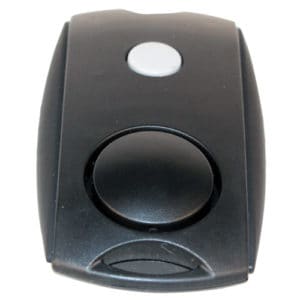 The piercing sound of a self defense siren is precisely engineered to grab immediate attention and disorient potential threats. When you activate the siren, it emits a high-decibel noise that peaks at a frequency designed to maximize discomfort. This combination of high volume and specific sound frequency guarantees the siren penetrates through background noise and enhances its effectiveness.
The piercing sound of a self defense siren is precisely engineered to grab immediate attention and disorient potential threats. When you activate the siren, it emits a high-decibel noise that peaks at a frequency designed to maximize discomfort. This combination of high volume and specific sound frequency guarantees the siren penetrates through background noise and enhances its effectiveness.
Sound perception varies among individuals, but most self defense sirens operate at frequencies between 1,000 and 5,000 Hertz (Hz). This range targets the most sensitive part of the human ear, creating intense auditory effects that are hard to ignore. The high-pitched noise can cause temporary hearing discomfort, making it difficult for a potential attacker to concentrate and proceed with their actions.
Moreover, the volume of these sirens often exceeds 120 decibels (dB), which is louder than a chainsaw or a rock concert. Such high volume levels are essential for significantly guaranteeing the siren’s sound travels, alerting others nearby to your distress.
This combination of specific sound frequency and high volume maximizes the device’s deterrent effect, giving you a critical time window to seek help or escape safely.
Battery Life and Power
Understanding the types of batteries your self-defense siren uses is essential, as it impacts both charging time and overall power consumption. You’ll want to know how long it takes to charge the battery fully and how quickly it drains during use. This knowledge guarantees you’re always prepared and can rely on your device when needed.
Types of Batteries
You’ll often find self-defense sirens powered by disposable or rechargeable batteries, each with distinct advantages regarding battery life and power.
Rechargeable options offer the convenience of reusing the same battery multiple times, which can be more cost-effective and environmentally friendly in the long run. They typically come with built-in safety features to prevent overcharging and overheating, prioritizing battery safety during use.
Disposable batteries, however, are known for their ease of replacement. You can quickly swap them out without waiting for a recharge. These batteries, such as AAAs or CR2032s, often provide a longer battery life per individual use compared to their rechargeable counterparts. However, they require consistent repurchasing, which could add up over time.
When considering battery life, factoring in the siren’s power consumption is important. Self-defense sirens are designed to emit loud, high-decibel alarms, which can drain batteries quickly.
Thus, knowing the average operational time on a full charge or new set of batteries can help you decide which type suits your needs best. Whether you choose rechargeable or disposable batteries, always verify they’re fresh and functional to guarantee your siren’s reliability in emergencies.
Battery Charging Time
 When evaluating battery charging time, you’ll want to consider how quickly your self-defense siren can be recharged to guarantee it’s always ready for use.
When evaluating battery charging time, you’ll want to consider how quickly your self-defense siren can be recharged to guarantee it’s always ready for use.
Efficient charging assures that the siren is operational when you need it most. Charging efficiency impacts how long the battery is to reach total capacity. High-efficiency chargers can considerably reduce downtime, allowing you to return the device to its best condition quickly.
Battery lifespan is another critical consideration. This refers to how long the battery can hold a charge over time and how many charge cycles it can undergo before its performance starts to degrade. Consistently using a high-efficiency charger can extend the battery’s overall lifespan.
You’ll want to ensure the siren’s battery can endure numerous charge cycles without losing effectiveness so it remains reliable over long periods.
Follow the manufacturer’s charging guidelines to maximize charging efficiency and battery lifespan. Proper maintenance and timely recharging are essential to ensure the siren is always at peak performance, providing you with a dependable tool for personal safety.
Power Consumption Rate
After ensuring your siren’s battery charges efficiently, it’s important to contemplate how quickly it consumes power during use. Understanding your device’s power consumption rate is vital for maintaining its reliability in emergencies. Most self-defense sirens are designed with power efficiency in mind, ensuring they remain operational when needed.
Power efficiency means the siren uses minimal energy while in standby mode but can still deliver a loud, attention-grabbing sound when activated. Many modern sirens incorporate automatic shut-off timers for peak energy conservation, preventing the device from unnecessarily draining the battery. Knowing the average battery life under typical usage conditions is essential—this information is often found in the product manual or manufacturer’s website.
Depending on usage frequency and design, different sirens have varying battery life, typically ranging from several months to a year on a single charge. Regularly testing your siren and understanding its power consumption habits can help you anticipate when a recharge is necessary.
Ensuring your device is always ready for use involves balancing power efficiency with effective energy conservation, ensuring reliability when it matters most.
Additional Features
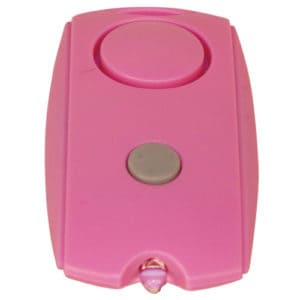 Many self-defense sirens have additional features like built-in flashlights and GPS tracking to enhance safety. These features provide you with more than just an audible alarm. A built-in flashlight can be handy in low-light situations, allowing you to find your way or signal for help.
Many self-defense sirens have additional features like built-in flashlights and GPS tracking to enhance safety. These features provide you with more than just an audible alarm. A built-in flashlight can be handy in low-light situations, allowing you to find your way or signal for help.
GPS tracking, on the other hand, offers a layer of security by enabling your location to be tracked in real time. This can be vital in emergencies, allowing authorities or loved ones to find you quickly.
User customization is another significant aspect of modern self defence sirens. Many models allow you to adjust the volume of the alarm so you can choose a setting that suits your environment and comfort. Some devices also offer multiple alarm tones or patterns, allowing you to select the most attention-grabbing sound.
This level of customization guarantees the device works effectively for your specific needs, providing a tailored approach to personal safety.
Incorporating these additional features into your self-defence siren can significantly improve its functionality, making it a versatile tool for various situations. When choosing a siren, consider these options to maximize your safety.
Benefits of Using One
Using a self defence siren offers several key benefits that enhance your safety and peace of mind.
First and foremost, the loud, piercing sound emitted by the siren can deter potential attackers, drawing immediate attention to your situation. This audible alert can scare off threats and give you time to escape or seek help. Additionally, the siren’s noise level is designed to cut through ambient noise, guaranteeing that it’s heard even in noisy environments.
Another significant advantage is the siren’s portability. Most self-defense sirens are compact and lightweight, making them easy to carry in your pocket, purse, or keychain. This convenience guarantees that you have a reliable means of calling for help at all times. Moreover, using a self-defense siren can reduce your reliance on physical confrontation, which may not always be possible or safe.
While you might be concerned about noise pollution, the temporary disturbance caused by a self defence siren is a small price to pay for the potential life-saving benefits it offers. Creating a loud, attention-grabbing sound in emergencies can be invaluable for your safety.
Real-World Scenarios
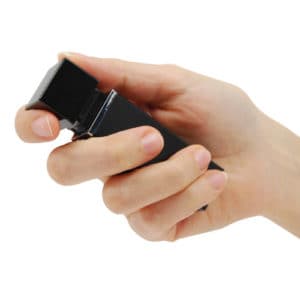 Imagine you’re walking alone at night and suddenly hear footsteps behind you—this is a real-world scenario where a self defence siren can be a lifesaver. In such moments, your safety becomes paramount. By activating the siren, you emit a loud, high-pitched noise that can startle potential attackers and draw attention to your situation. This sudden commotion can deter the assailant, giving you a significant window to escape or seek help.
Imagine you’re walking alone at night and suddenly hear footsteps behind you—this is a real-world scenario where a self defence siren can be a lifesaver. In such moments, your safety becomes paramount. By activating the siren, you emit a loud, high-pitched noise that can startle potential attackers and draw attention to your situation. This sudden commotion can deter the assailant, giving you a significant window to escape or seek help.
Self-defense sirens are designed to be easily accessible and simple, making them ideal for emergency response. You only need to pull a pin or press a button to activate the alarm, which is vital when every second counts. The siren’s sound can reach up to 130 decibels, ensuring that it’s heard from a significant distance, alerting nearby individuals or authorities to your emergency.
In addition to deterring attackers, the loud noise can also disorient them, giving you the upper hand. Carrying a self defence siren enhances your sense of security and readiness to respond effectively in threatening situations, ensuring your safety remains a priority.



